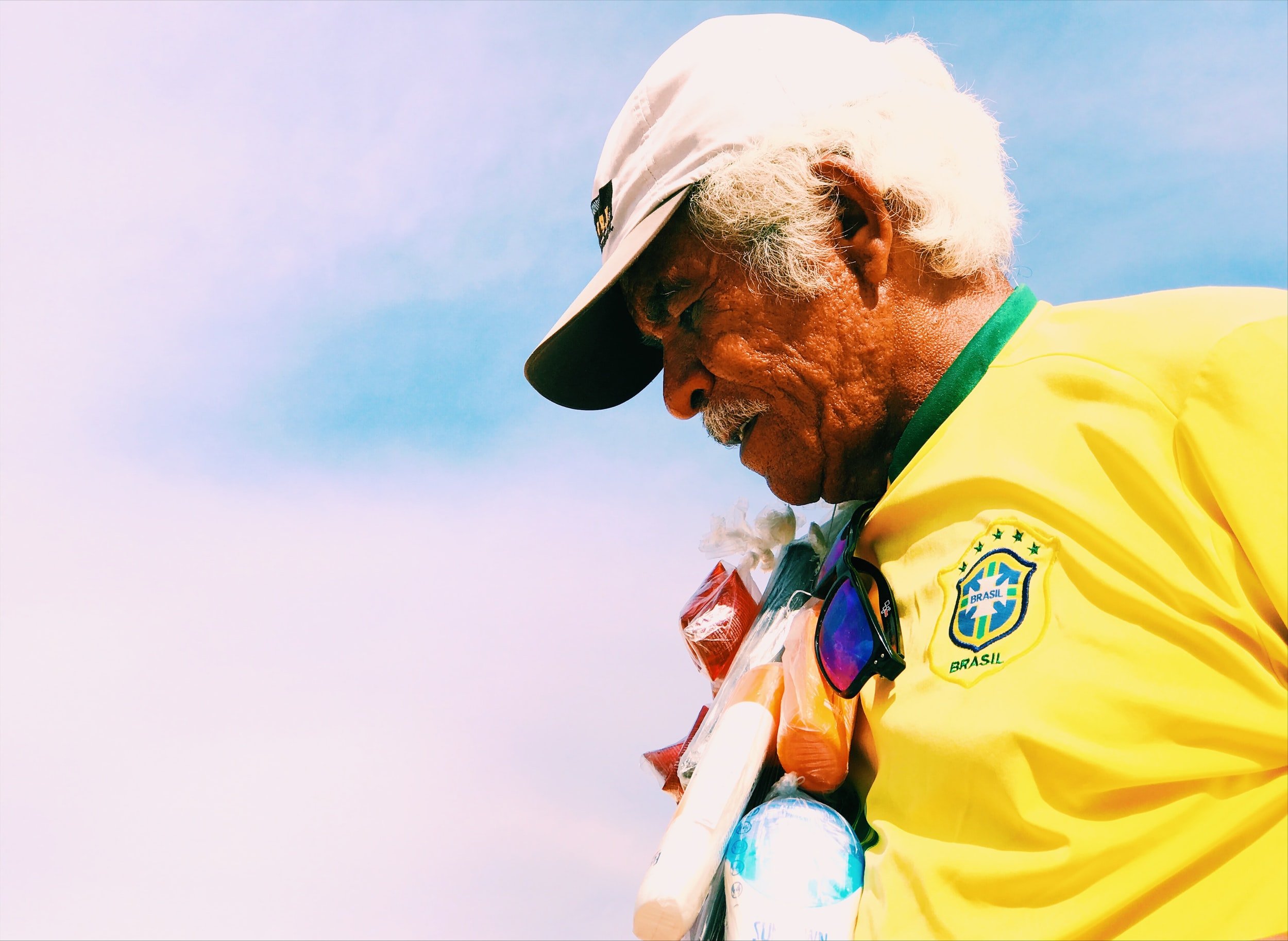15 Essential Brazil Travel Tips: Culture, Safety, Budgeting, and More
/For decades, Brazil has captured the imagination of partygoers, holidaymakers, and honeymooners alike. With bustling cityscapes, unparalleled natural beauty, and a one-of-a-kind culture, it’s no surprise the country draws in more than 6 million tourists every year.
Given Brazil’s sheer scale, any successful trip must begin with a thorough planning process. To that end, we’ve put together 15 essential Brazil travel tips, covering health and safety, money management, cultural adjustment, and more to help you get the most out of your experience.
15 Brazil Travel Tips
Gathered from a pool of travel enthusiasts with years of experience on the ground in Brazil, here are 15 travel tips you should know before visiting the country:
1. Do your research
This might sound obvious, but we can’t emphasize it enough. Brazil is a huge country with distinct cultures in different regions. For instance, you’ll find greater European influence in the south, Afro-Brazilian presence in the north, and Caboclo culture in Amazonia.
Before traveling, spend some time learning about the different histories and cultures of each area you plan to visit. With a little research, you’ll have a far better understanding of your surroundings and be able to connect with locals on a deeper level.
2. Hire a guide
Unfortunately, no amount of research will afford you a native’s understanding of the country. If you have some money spare in your budget, consider hiring a local tour guide to take you through unexplored streets and to unseen attractions.
While you may be able to go without a guide in the cities, their expertise becomes invaluable in remote regions like the Amazon basin. Without one, you’re likely to miss out on many of the best bits.
3. Buy mosquito repellent
Brazil is home to a number of prickly, venomous, and otherwise dangerous species. None, however, are as oppressive as its mosquitoes, which threaten with everything from malaria and yellow fever to dengue and Zika virus.
Provided you take the appropriate safety measures, you needn’t worry about these pesky insects. Safety measures, in this case, means getting vaccinated before travel, wearing long sleeves where possible, using mosquito nets at night, and regularly applying mosquito repellent.
4. Use licensed taxis
Steer clear of unlicensed, unmarked taxis. Rather than hailing a taxi in the street, it’s best to phone for a cab or pick one up from a taxi stop. Uber is another good option in Brazil’s big cities.
Hotel staff will be able to help you with finding a certified taxi service. Some hotel directories will also have contact information for English-speaking cab drivers, should you need them.
5. Drink lots of water
You’re likely to hear mixed things about the cleanliness of Brazil’s tap water. While it is safe in some parts of the country, you may get sick from drinking tap water if you’re not a well-accustomed local. At the very least, you’ll probably find the taste to be off-putting.
Given Brazil’s heat and humidity, clean water isn’t something you’ll want to go without. Your options are to continually buy plastic bottles, or, if you want to protect the environment and your bank account, invest in a water bottle with a built-in filter.
6. Get vaccinated
If you’re only traveling to big cities like Rio de Janeiro or São Paulo and are up to date with your routine vaccinations, you generally won’t need to worry about additional immunizations.
However, if you’re venturing into remote areas like the Amazon, you may require vaccinations for hepatitis A, typhoid, yellow fever, and malaria. Make sure to research your vaccination requirements before traveling, and contact your doctor if you’re unsure.
7. Consider flying
Did we say Brazil is a big country? Given the long distances between many of the major cities, you may want to consider flying as your primary mode of transport in Brazil.
If you’re traveling during the low season (generally considered to be June to December), you should be able to snag a good deal on flight tickets and save a lengthy bus trip that could span several days.
8. Learn some Portuguese
Unlike most other Latin American countries, Brazil’s official language is Portuguese. English isn’t widely spoken either, with only around 5% of the population having a basic understanding of the language.
A little Portuguese, therefore, will go a long way to helping you interact with locals. Basic phrases like “olá” (hello), “bom dia” (good morning), and “tudo bem?” (how are you?) are a good place to start.
9. Be patient
Brazilian culture is known to be relatively relaxed and easy-going, with locals adhering to a much slower pace of life than what many westerners may be used to.
Try to embrace the country’s leisurely nature. This may mean being a little more patient than usual in hospitality settings while waiting for food and drinks to be served.
10. Watch your belongings
A good safety tip to follow wherever you go, make sure to keep a watchful eye on your bags when out and about, especially in crowded areas and transport hubs.
In addition, dress modestly, leaving expensive possessions at home if you plan to visit some of Brazil’s less developed areas. Theft is unlikely, but opportunistic criminals could still target you if you give them the opportunity.
11. Withdraw money before 10pm
If you’re out for the evening, be sure to withdraw some cash before 10pm. ATMs shut down at this time and generally won’t reopen until 7am or 8am the next morning.
Cash isn’t essential, however; the vast majority of shops, restaurants, and bars will accept credit and debit cards. A great solution for tourists is to use a pre-paid debit service like Revolut, which only charges a nominal fee for currency exchanges.
caipirinha is a drink made with CACHACA rum, limes, and lots of sugar
12. Make friends — but be wary
Brazilians are very friendly people, and you won’t find it difficult to strike up connections during your travels — especially if you learn some basic Portuguese.
However, like anywhere else in the world, there will be a few unsavory characters. Be cautious around strangers that are especially friendly, particularly in tourist areas and nightclubs.
13. Eat street food
For the culinarily inclined travelers, you’ll be pleased to hear that Brazil’s street food is delicious! Sampling the likes of pão de queijo, picanha, and kibe on street corners is one of the best ways to live like a local while saving some money
Be warned, however, that not all food stalls are made equal. Exercise your judgment; if there’s a long queue of locals by the stand, chances are the food is of a good standard.
14. Be careful in favelas
Any time you’ve heard about favelas — the more deprived and densely populated neighborhoods in Brazil’s big cities — it’s probably been bad news. But that isn’t always accurate; many favelas are completely safe.
At the same time, some are indeed controlled by local gangs and best avoided. If you have any doubts, hotel staff and tour operators will be able to advise on which areas are safe.
15. Consider seasonality
Prices for flights, accommodation, and other travel-related costs fluctuate heavily between the peak and off-peak tourist seasons. If your heart is set on attending Rio’s Carnival in February, for instance, be prepared to pay an arm and a leg.
On the other side of the coin, you can save yourself hundreds of dollars if you’re happy to visit Brazil during the winter months (June to December).
Brazil Awaits
With these tips, you’ll get to experience the best of Brazil while keeping safe and sticking to your budget — all that remains is to plan your trip!
Interested in visiting this enchanting country and learning from its culture? Learn from Travel is a leading study abroad provider with deep networks in Brazil. Contact us today to arrange your fully customizable, culturally-immersive travel program and make your travel plans a reality.










































































































